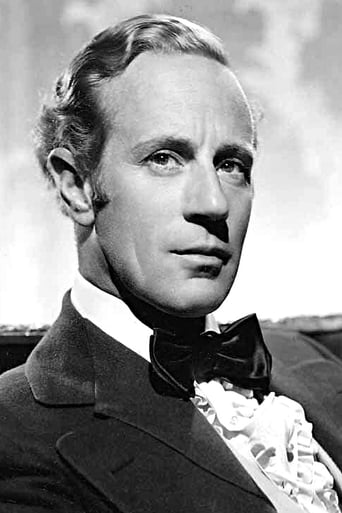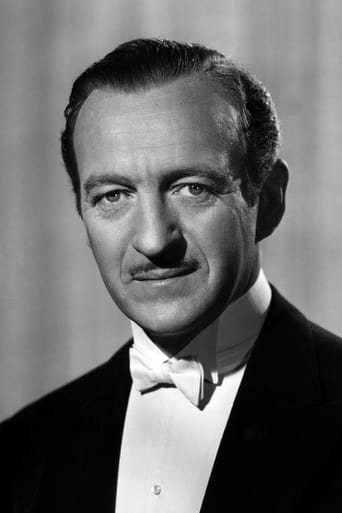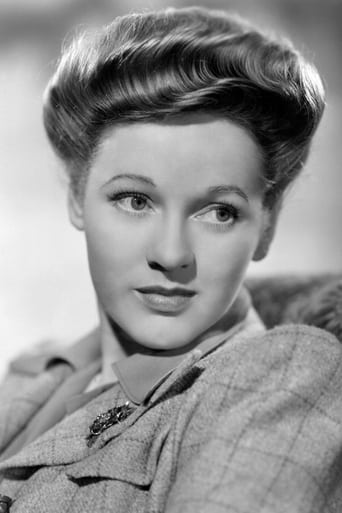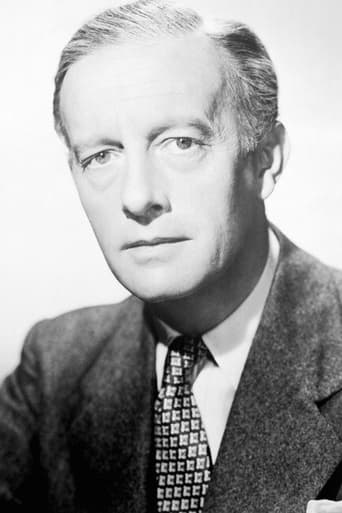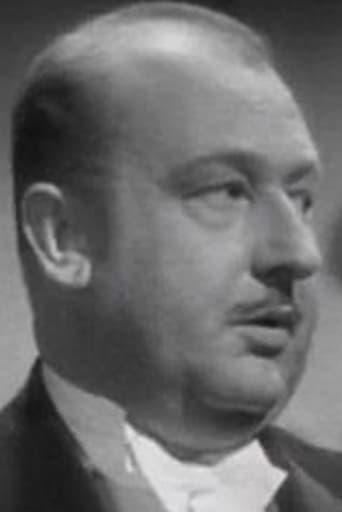SoftInloveRox
Horrible, fascist and poorly acted
filippaberry84
I think this is a new genre that they're all sort of working their way through it and haven't got all the kinks worked out yet but it's a genre that works for me.
Brendon Jones
It’s fine. It's literally the definition of a fine movie. You’ve seen it before, you know every beat and outcome before the characters even do. Only question is how much escapism you’re looking for.
Tyreece Hulme
One of the best movies of the year! Incredible from the beginning to the end.
blanche-2
Leslie Howard's last film was one that he starred in, produced, and directed, in England called The First of the Few; in the U.S. called Spitfire. The British title relates to Winston Churchill's words: "Never in the field of human conflict was so much owed by so many to so few."It is the story of R.J. Mitchell, who designed the Spitfire, a plane which helped win the Battle of Britain.The Spitfire had several advantages. It was difficult to shoot down since the planes flew higher and faster than what the Germans had. Also, it was easy for the Spitfire to refuel since they were on home ground, whereas the Germans had to return to Germany to refuel. In part, it was designed by Mitchell due to his concern that the British military could not stand up to the German military. Mitchell's brilliance was in combining elements that had been invented earlier to make one fabulous plane. He had some false starts, but he ultimately succeeded. In 1931, his design, S.6B, won the Scheider Trophy Competition and started things off. The plane later broke the world speed record.We don't learn too much about Mitchell himself. He was dedicated to his work to the point of exhaustion, so it's doubtful he had a hot social life. Unlike Howard's upper class, even-tempered Mitchell, the real Mitchell was athletic, lower class, and easily angered. Howard made his acting choices deliberately as Mitchell's family spent a lot of time on the set.Howard costars with David Niven as his pilot, who provided some lighter moments. And if you like that sort of thing, there is a lot of aerial footage.Mitchell died of rectal cancer in 1937 at the age of 42, so he didn't see all of his plane's success. Howard died in 1943 on KLM Royal Dutch Airlines/BOAC Flight 777, which was shot down over the Bay of Biscay by the Luftwaffe as the plane flew from Lisbon to the UK. He was 50.This is a strong propaganda film, well acted and well directed. It was filmed at an active fighter station, Ibsley, and the extras were real Battle of Britain fliers, and the film also showed the real people working on the plane.Anyone interested in Mitchell, his son wrote two books: R.J. Mitchell: World Famous Aircraft Designer, and R.J.Mitchell: Schooldays to Spitfire.As an aside, because this was a propaganda film, Niven was released from his MGM contract in exchange for distribution rights. When Samuel Goldwyn saw the film, he realized Niven was in a supporting role and re-edited the movie, cutting 40 minutes.This is a similar story to what happened to Tyrone Power when MGM borrowed him for Marie Antoinette. When Zanuck saw that Power played a supporting role, he never lent him out again, and Power was offered some huge films as in 1939 he moved into the top 10 box office stars. I think Niven was luckier, though he and Goldwyn fought for years.
Igenlode Wordsmith
David Niven is definitely channelling old friend Errol Flynn here, in the role of the irrepressible Geoffrey Crisp! One assumes the part was created to afford a little feminine light relief, since the central character is -- inconveniently for the standard narrative curve -- already happily married as a young man when we first meet him, and omits to look elsewhere... At any rate, Niven-as-narrator is a charming scamp, and refreshingly the plot refrains from taking the obvious path of marrying him off to his 'snapdragon', R.J.Mitchell's formidable secretary Miss Harper. The relationship between the two eventually softens in their mutual affection for Mitchell, but never becomes romantic.But it is Leslie Howard in the central role who undoubtedly owns the film; perhaps unsurprisingly, given that he is credited as both director and producer, but it is a typical 'quiet' performance that effortlessly overshadows Niven's endearing antics. As one bemused company director remarks after an encounter with the character's unassuming forcefulness, "But I thought you said he was *shy*..?" The decision to open the film with extended sequences of anti-British propaganda sourced from Britain's enemies -- from Goebbels to Lord Haw-Haw -- is a striking one, and more effective than any tendentious rhetoric on "The last Bastion of Liberty" in establishing the concept of an existential threat. The riposte is made chiefly by a montage of quintessentially English images; 'this is what we are fighting for'. And the context is set in the Battle of Britain, with an overworked handful of pilots and Spitfires flying again and again against vastly outnumbering waves of attackers.It is not, however, really a 'war' picture. If anything it is a biography of the Spitfire as much as of its designer, and the story effectively ends pre-war in 1938, with the commissioning of the first planes. If it has a fault, it is that I felt the film was perhaps a little didactic, an instructional piece of history rather than an emotionally engaging human drama; we witness Mitchell's career frustrations and achievements (oddly, it is never made clear just why Crisp blacked out with almost fatal results in that early seaplane competition; one would assume it was from the hitherto unexpected g-forces produced by banking at such record speeds, but the issue, subsequently a well-known fighter pilot phenomenon, is simply dropped unexplained)... but it is only at the end of the story, where Mitchell in effect deliberately sacrifices his own chances of survival in order to get the Spitfire design finished, that we are actually drawn into the tensions of the tale rather than merely observing. The enclosing narrative device is clever in that Mitchell's fate is left carefully ambiguous at the start; since neither the contemporary audience nor modern viewers are likely to be familiar with the history of this 'back-room' figure, the ultimate outcome remains 'up for grabs', as it were, and the hero's choice an active one until the end.Rosamund John provides effective support as loyal wife Diana, despite the absence of conflict between them to provide a cheap motor for their scenes together (particularly memorable is a scene in the kitchen where Diana has to reinforce her husband's faltering resolution to maintain his integrity at the cost of his employment... while trying to get him to chop the parsley!) Scenes in pre-war Germany are handled with a light touch that distinguishes the German pilots and designers from the politicians responsible for their deployment, and with an ironic comedy that recalls "Pimpernel Smith", Leslie Howard's earlier potent propaganda vehicle. Script writer and ubiquitous character actor Miles Malleson can be glimpsed in a typical cameo role, and David Niven, while always entertaining, shades his character towards maturity while representing a whole generation of ex-WWI flyers who found themselves cast adrift at the end of hostilities. It was the ending, with his now-middleaged RAF officer taking to the air in person and then pursuing the German pilot who had shot down one of his squadron-mates. that I found a little trite.But the final imagery, as the Spitfires fly away from the camera into an opening canyon of gilded cloud, is magical, aided by William Walton's soaring music.Overall I enjoyed and would recommend the film, but felt it not to be entirely the dramatic equal of the other test-pilot picture with which I always confuse it, David Lean's 1952 "The Sound Barrier", nor of Howard's previous wartime excursion "Pimpernel Smith". It is undoubtedly a pity, however, that Leslie Howard's directorial career was cut short by enemy action; in his choice to serve his country in wartime cinema rather than pursue a Hollywood career, he proved himself to be a weapon of considerable effectiveness, and it is ironic in the context of this film that, as in the case of R.J.Mitchell, it proved to be a choice that may well have cost him his own life. As a swansong, the role is poignant but also appropriate.
screenman
This movie depicts a period in the life of RJ Mitchell and his Schneider Trophy-winning aircraft designs that later realised the Spitfire fighter-plane. I have no idea how accurate the details may be. Leslie Howard gives a decent performance as the aircraft designer, with a just-about-adequate co-role for David Niven as womaniser Geoffrey Crisp, his would-be test pilot. Niven tends to feature more prominently in the publicity photographs, which is strange considering that Howard was still a big star (though soon to fade), he has a more important role in this movie as well as being more convincing, but also directed it too.Frankly, it's far too long at 118 minutes. There's a lengthy, introductory preamble with Spitfires returning to base during the Battle Of Britain, which sets the scene for Niven's Crisp to explain the history of the aircraft and its creator to a group of apparently genuine fighter pilots. We could have done without it. After that, the movie just suffers from what I might call directorial elephantiasis. Far too many scenes are much longer than they need to be. These allow the story to drag and the action becomes diluted. It's a classic example of an excellent actor with so much self-belief that he thinks he can be a director too. Which of course, he can be; but not necessarily a good one.The movie likewise suffers from all of the other constraints of a wartime work. Limited resources and even more limited special-effects. They're not necessarily Howard's fault. But the over-long production under such circumstances is evidence of a man who doesn't know his task well enough. Half an hour could be pared away from this tale, and that would have sharpened it up and lent it a genuine sense of urgency.My DVD copy came free with the 'Daily Mail'. Unfortunately it also included a warts-and-all soundtrack that hisses and crackles badly enough to detract from one's pleasure. If all recordings are like this it must be a bit of a disaster for anyone actually making a purchase. It definitely needs a 'Dolby' treatment. Though frankly the movie hardly merits repair.When you look at the wonderful improvement in quality that was realised even a decade later, it seems a pity that such a good story was compromised for want of resources. Still; there was a war on.An adequate tub-thumper from the dismal days of 1942; today is is strictly for collectors and fans.Not recommended.
music-room
'The First of the Few' shows Leslie Howard at his most reflective, almost to the point of diffidence. His only show of assertiveness is when he informs the haughty bigwigs of 'Supermarine'that he will design aeroplanes HIS way, despite David Horne's salutary warning that he will 'come an almighty cropper'. Howard plays R.J. Mitchell, legendary designer of the Spitfire, the revolutionary fighter plane that was to take centre stage in the Battle of Britain.Throughout the film it is Howard himself who takes centre stage and never really leaves it, his star quality and charisma embracing all manner of scenes, from cheeky one - liners, 'you're not a bird, but you can fly', as a retort to Tonie Edgar - Bruce's mercurial Lady Houston, or modestly basking in the reflected glory of yet another Schneider Trophy triumph (the annual seaplane contest between Great Britain, USA and Italy which has now passed into folklore). Perhaps he is even more compelling in the touching solo scenes, with little or no dialogue, where, to William Walton's evocative music, he is found by his colleagues overworking himself deep into the night, trying to design the Spitfire before the imminent spread of Germanic imperialism, or, later on, close to death, scanning the skies for a sign of David Niven leading the way on the famous fighter plane.An impressive cast of character actors give him great support, including Roland Culver as the supportive and insightful head of Supermarine, Anne Firth as a petite but highly efficient secretary, and future film maker Filippo Del Giudice as a foppish, hilarious Bertorelli, the high ranking Italian official who relays the message from 'Il duce' Mussolini, to the effect that the winning British Schneider Trophy entry could only have achieved such a feat 'in our glorious Italian sky'.Howard's introverted Mitchell is in contrast to David Niven's jaunty, red blooded senior pilot, who demonstrates in this film just why he will go on to be the top British star in Hollywood, his easy acting style and unbridled optimism making Crisp a lovable character without ever seeming arrogant. Perhaps his inexplicable crash in one of the Schneider Trophy contests has the effect of 'bringing him down to earth', both literally and in character.The only downside of the film is an oddly mechanical performance from Rosamund John, as Mitchell's wife. Obviously she could not come over as a dominant figure to Howard's subtle Mitchell, but the attempt to make her appear even more introverted than the star produces an uncharacteristically robotic outcome from this fine actress.Both Mitchell and Howard were soon to pass beyond earthly constraints into immortality, the latter disappearing in mysterious circumstances, ironically, in a plane, over Portugal, in June, 1943. There is no finer epitaph to both of them, than 'The First of the Few', Mitchell as the genius aeroplane designer, and Howard as the first English actor (albeit of Hungarian parents) to make it big in Hollywood. In this respect, Niven may be regarded as 'the second of the few'. A gem of a film, whose great star never shone more brightly than here.

